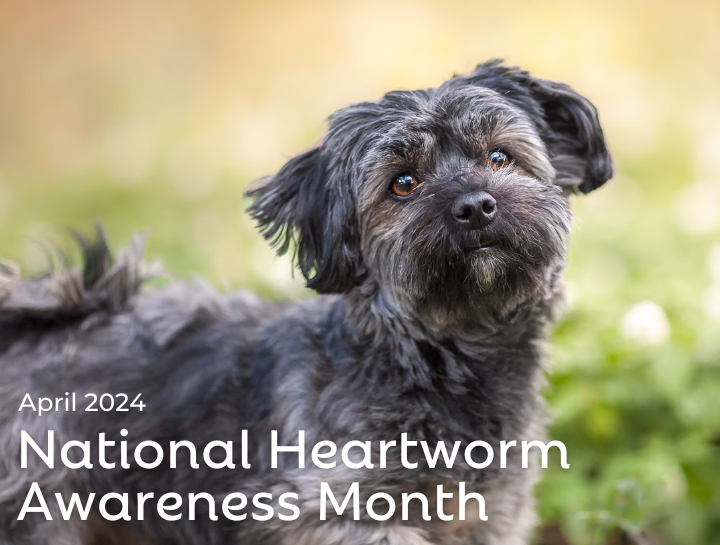National Heartworm Awareness Month

Heartworm disease is a very serious disease that affects both cats and dogs. It's caused by foot-long worms that settle into the heart, blood vessels and the lungs of an affected pet. These types of worms can cause severe right-sided heart disease and lung disease and can be potentially deadly if not caught in time. Pets that survive heartworm disease often have a lower quality of life because of the damage to their organs. April is National Heartworm Awareness Month—the perfect time to learn more about what heartworm is and why heartworm prevention is vital to your pet’s wellbeing.
What is heartworm?
Heartworm disease is caused by a type of roundworm known as dirofilaria immitis. It takes 6 - 7 months for larvae to mature to adulthood where it begins the reproduction cycle. A single adult heartworm can reach up to 12 inches? in length and live up to seven years.
How do pets get heartworm?
Mosquitoes are the most common carrier of heartworm. A female mosquito picks up larvae in the bloodstream of an infected animal, then transmits the larvae into the next animal it bites. Dogs are a perfect host for heartworms which is why they're most affected by the parasite, but cats can also become hosts. Mosquitos have been noted in studies to be active in freezing weather, not just in non-winter months
Heartworm larvae take about 4-5 months to develop into adult worms that settle into the organs of the animal. Once the worms take hold, the adults can live and produce larvae for 5-7 years.
Signs of heartworm in dogs
During the early stages of the infection, signs of heartworm is almost impossible to detect in dogs. Your dog will act normal until the larvae have matured a few months after infection. Signs of infection include:
- Coughing
- Easily fatigued
- Lethargic
- Lack of interest in play or exercise
- Decreased appetite
- Weight loss
As the infection advances, your dog may develop right-sided heart disease that results in a swollen belly from excess fluid that the heart can't pump out. A dog that has a large quantity of heartworms in their organs can exhibit Caval Syndrome which is caused by the heartworms suddenly blocking blood flow.
Signs of heartworm in cats
Cats are much less likely to be afflicted by heartworms versus dogs, but it's still a possibility. When a cat gets infected by heartworm, their organs are damaged just like in dogs. The condition, heartworm associated respiratory disease (HARD) can cause symptoms that include:
- Asthma-like attacks
- Loss of appetite
- Vomiting
- Seizures
- Difficulty walking
- Fluid accumulation
Heartworm prevention is important for cats because they can't be treated after the worms have taken hold. Cats can live with heartworms, but they can also collapse or die when signs are first noticed.
How is heartworm tested?
Dogs can be treated starting at 7 months old and tested 6 months after their initial visit. Tests should be done every 12 months after the first two visits. Adult dogs who were never tested or treated for heartworm need to be tested prior to treatment. Afterwards, the dogs need to be tested six months after, then every 12 months.
Cats require a blood draw to look for antigens and antibodies in response to a heartworm infection. Because cats have no approved treatment for infection, they should be put on a preventative dose as soon as possible.
Engaging in heartworm prevention is one of the best ways to help pets stay healthy. Call (860) 379-0701 to talk to our team about heartworm prevention and treatment for your pets.
